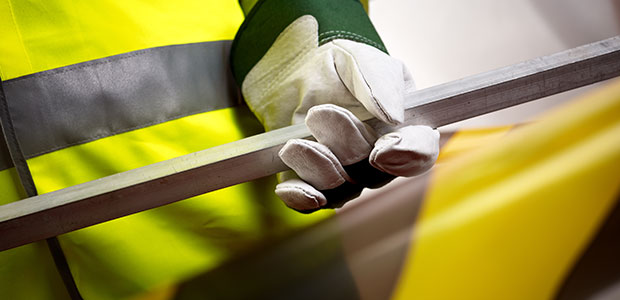
A New Year of Hand Safety
The new year can be a promising one for hand safety—but only if employers and workers seriously consider the implications of hand injuries and proper personal protective gloves.
- By Lydia Baugh
- Feb 01, 2020
The year 2020 can be a new era for hand safety—if employers and workers alike take hand protection seriously. Of the 286,810 non-fatal occupational injuries to upper extremities in 2018 involving days away from work in private industry, 123,990 involved hands, which is more than 43 percent, according to the U.S. Bureau of Labor Statistics.1 The hand has 27 bones and 30 muscles, plus connective tendons and ligaments. Since healthy hand function is so essential to many tasks, the stakes are high for both employees and employers.
Hand injuries are both expensive and tragic. A hand injury can cost anywhere from $540 to $26,000, according to the National Safety Council. Injuries to the hand are the second most common type of workplace injury, so they also have a big impact on workers’ compensation claims. The National Council on Compensation Insurance, Inc., found that “the preliminary 2018 average indemnity accident year claim severity increased by three percent relative to the corresponding 2017 value. Medical lost-time claim severity increased by one percent.”2
The Occupational Safety & Health Administration (OSHA) has reported that 70.9 percent of hand and arm injuries could have been prevented with personal protective equipment, specifically safety gloves. Yet, 70 percent of workers don’t wear hand protection, and of those who do, 30 percent don’t wear the right kind of glove for the task.
Team Effort
The International Safety Equipment Association (ISEA) has been collaborating with the National Waste & Recycling Association (NWRA) and the Voluntary Protection Programs Participants’ Association (VPPPA) on a #SafeHands awareness and education campaign to help workers and employers grasp the importance of hand protection. The main message: wear gloves that match the hazards of a job, whether those might be punctures, cuts, impacts or others.
“Whether working on a pick-up route or in a material recovery facility (MRF), workers should have— and wear—hand protection that prevents injury from hazards such as, needle sticks and other hand-related risks common to handling the nation’s waste and recycling,” said NWRA CEO Darrell Smith. “We’re partnering with ISEA to make sure glove manufacturers and suppliers really understand our industry, and to emphasize to our member employers and their workers that it’s vital to take hand safety seriously.”
“Personal protective equipment is a very important part of an effective safety management system,” said VPPPA Chairman of the Board J.A. Rodriguez Jr. “We are very excited to be collaborating with ISEA on helping to spread the word and in keeping VPPPA members informed. Our member network is in a unique position to join ISEA in positively influencing enhanced hand protection for every worker, everywhere.”
Range of Hazards
ISEA and its partners have particularly spotlighted impacts, cuts and punctures as common risks that need hand-protection attention.
Last year, ISEA announced a new standard for industrial gloves aims to protect workers from hand-impact injuries. ANSI/ISEA 138-2019, American National Standard for Performance and Classification for Impact Resistant Hand Protection was released in 2019 to improve on the impact performance of industrial gloves. The new standard built upon the widely used ANSI/ISEA 105-2016, American National Standard for Hand Protection Classification.
ANSI/ISEA 138 defined an agreed test method, included three defined performance levels, specified a pictogram mark for each of the levels for compliant gloves, and required products be tested in a laboratory with a certificate of accreditation meeting the requirements of ISO/IEC 17025:2017, General requirements for the competence of testing and calibration laboratories. Copies of ANSI/ ISEA 105-20163 and ANSI/ISEA 138-20194 are available from ISEA and from ANSI’s licensed resellers.
In addition, ISEA produced a white paper offering guidance on selecting impact-resistant hand protection to help companies and safety professionals understand the problem, explore contributing factors, and consider prevention and protection options. It explains the ANSI/ISEA 138-2019 industry standard, the three performance levels of hand-impact gloves, and provides links to a helpful list of PPE providers participating in ISEA’s Hand Protection Group. The resource is free to download: ISEA White Paper—Selecting the Best Impact-Resistant Hand Protection (PDF).5
ISEA’s standard for cut and puncture protection, ANSI/ISEA 105-2016, has also evolved. The standard now classifies nine levels of protection, defined as A1 through A9. Generally speaking, those levels can be thought of in three groupings:
- Levels A1, A2, A3 offer protection against scrapes.
- Levels A4, A5, A6 offer protection against injuries for which stitches would be required.
- Levels A7, A8, A9 offer protection against the most serious injuries.
It’s important to note that even the most puncture-resistant gloves may not be designed specifically to protect against needle sticks.
Additional information and education focused on choosing hand protection for cut/puncture will be published soon.
New Year’s Resolution
Developing a safety culture that prioritizes hand protection should be a top priority for employers in 2020. Hand injuries, whether from impacts or cuts/punctures, are too common and too costly to overlook.
For more information, including a helpful downloadable hand protection infographic, visit SafeHandsAtWork.org.6
REFERENCES
1 https://www.bls.gov/iif/oshwc/osh/case/cd_r13_2018.htm
2 https://www.ncci.com/Articles/Pages/AU_AIS2019-Powered-DataDriven-Insights-WC-System-Delivering.aspx
3 https://safetyequipment.org/standard/ansiisea-105-2016/
4 https://safetyequipment.org/ansi-isea-138-2019/
5 https://safetyequipment.org/wp-content/uploads/2019/11/ISEA_ HandImpactWhitePaper_102519.pdf
6 https://safetyequipment.org/safe-hands-at-work/
This article originally appeared in the January/February 2020 issue of Occupational Health & Safety.